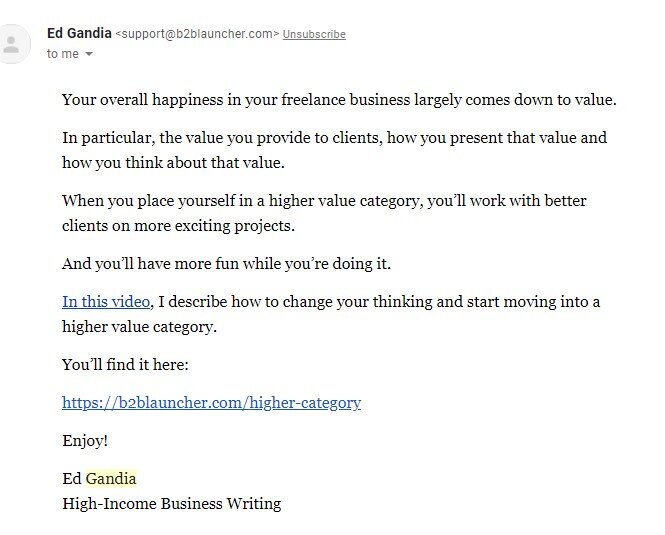The power of a PS
(This originally appeared in my newsletter. Sign up now to get content like this, for free, every two weeks.)
Marketing emails - long or short - should be built around one idea.
But what should that idea be? If you're emailing someone who just found out you exist last week, they are going to need dramatically different content from someone who is ready to buy today.
So every email you write is going to have a tradeoff. And tradeoffs are just the worst because they force you to send irrelevant content to someone. Maybe you send an offer to someone who wanted a video, or maybe you send a video to someone who wanted an offer.
But there's a way around this tradeoff: your PS field. Here's why:
Using PS to prioritise your messages
It's surprisingly hard to limit an email to one main idea. You have lots of things you're trying to achieve, and lots of people on your team have things they want to achieve. Everyone has a different offer, blogpost, video or webinar they want to promote, and everyone's lobbying to get their thing in your email.
A bad way to solve this is to say yes to everyone and fill your email with every resource and link under the sun. That's confusing for your reader because it becomes a jumble. They have no idea what you're really asking them to do.
Here's a better way. Choose your one main message you want to get across. Write the email based around that message. Then, use your PS as a "mopping up." Stick any additional messages, resources or "asks" you have in that PS.
Here's an example. This is from a copywriter and business coach named Ed Gandia. He sends heaps of emails promoting his content as he produces it. Each email is laser-focused on one idea - a brief summary of the content he's promoting, then a link to it. Take a look:
Very straightforward. Now take a look at the PS from the same email (just skim it, you don't need to read every word to get the point I'm going to make):
Whoa! It's nearly as long as (if not longer than) the body of the email!
But there's nothing wrong with that. The email has one very clear main objective: get people to click through and watch the video. The PS comes after that, so Ed can fill it with anything he wants - anyone who clicks through to something in the PS is a bonus.
The PS creates a clear physical barrier between the main bit of the email, and all the extra nice-to-haves.
This is much easier for the reader. If you put these five different calls to action in the body of the email, it would be a confusing mess. But by splitting them out from the main email, it's crystal-clear to readers what they should focus on, and what they can skim over.
This becomes even more powerful when you pair it with the next reason to use your PS . . .
You can focus on different stages of awareness
Your leads roughly divide into 3 groups:
People who are only vaguely aware of the problem you solve
People who aware of the problem you solve, and are actively comparing different solutions
People who have decided they want to work with you, and just need an offer to get them across the line
Here's the problem: it's really hard to tell which of the three groups any one of your leads is in. Impossible, really. And someone in the "ready to buy" stage is going to benefit from vastly different content than someone in the "just learning about the problem" stage.
That's where the PS comes in. You can focus the bulk of your content of your email on one of these three stages, then put in content relevant to the other stages in the PS.
That's exactly what Ed Gandia did in the example I showed above. His email is for someone in the first stage. It's just generally increasing his credibility in the space, and keeping him top of mind. It's not asking people to buy anything.
But if someone receives this email who is ready to buy, the PS field gives them an easy pathway to do so.
You can do the opposite, too. If you're sending your leads an email that focuses on an offer, you can put some "softer" resources in the PS. That way, if they're not ready to buy, and they skim past your offer, they still might find something in the PS that is relevant to them.
Wrap it up
So if you're not using your PS field in your marketing emails, start! There really is no downside - and the upside is that someone finds some relevant content in an otherwise-irrelevant email. Not bad.
See you in a couple of weeks,
Sam
PS: If you're about to push go on a marketing email, you should book a copy review. Only $600, and it's a great way to get objective feedback on your approach. I only do one or two a week so get in there.
If you like what you just read, you can get content like this delivered straight to your inbox at 6am every second Monday. Sign up now.
Photo by Brett Jordan on Unsplash


